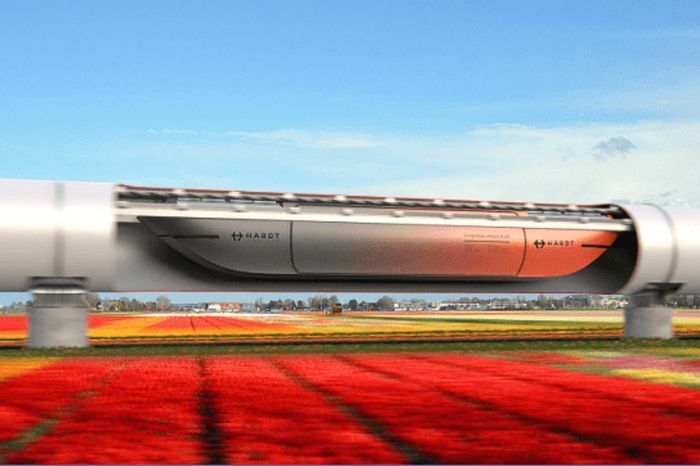One in every 13 bridges in the US is deteriorating
Tens of thousands of 'aging' bridges
The Francis Scott Key Bridge has been in existence for 47 years, and in that time, it has never suffered a shock so great that anyone would have expected the bridge to collapse.
But when the Dali, a container ship weighing more than 100,000 tons, crashed into Francis Scott Key, the bridge collapsed in less than a minute.

The Francis Scott Key Bridge collapsed completely after just one hit by a container ship on March 26. Photo: CNN
While such a catastrophic collapse may not have been entirely predictable, collision-induced bridge collapses are not unprecedented and could have been avoided.
Recent federal safety inspections of the Francis Scott Key Bridge found it to be in 'stable' condition and Maryland's Governor said the bridge's maintenance is 'fully compliant'. But thousands of other bridges in the US are in poor condition.
According to the American Society of Civil Engineers (ASCE), in the US, 46,000 bridges have old structures and are in 'degraded' condition, and 17,000 bridges are at risk of collapsing after just one impact.
Engineers and other infrastructure experts say extreme weather events, increasingly heavy trucks and collisions from larger container ships pose significant risks to U.S. bridges.
According to the American Society of Civil Engineers' (ASCE) most recent infrastructure report released in 2021, approximately 46,100 of the 617,000 bridges across the United States, or 7.5%, are considered lacking structure and in poor condition.
Factors that threaten bridges
Many of America's older bridges are vulnerable to severe weather events, such as earthquakes or hurricanes. According to ASCE's 2021 report, nearly 21,000 bridges were found to be at risk of foundation threats during severe weather events.
A 2016 report by the US Congress found that the seismic resilience of US highway systems has improved in recent decades thanks to investment in new infrastructure.
However, not every highway has been retrofitted, and there is still no way to build infrastructure that is both cost-effective and can withstand the most intense earthquakes, the report said. know.
In addition, the bridges are adversely affected by heavier trucks than when the bridges were designed. These heavier trucks, which can exceed 40 tons, risk overloading bridge components, causing metal fatigue and cracking, while also reducing the life of the bridge, the ASCE report said. .
Aging infrastructure, inclement weather and larger traffic aren't the only concerns. More than 17,000 bridges are at risk of collapsing after just one impact, known as bridges at risk of 'severe failure'.
That means that if impacted with enough force in the right place, a large section or the entire bridge could collapse, as in the case of the Francis Scott Key bridge.
What protection solution is possible?
Experts say there is an urgent need to improve or protect old bridges against increasingly larger modern ships. The Dali, which crashed into the Francis Scott Key Bridge on Tuesday, was 300 meters long - nearly twice the length of the ships used when the bridge was built in the 1970s.
Fenders are built to protect the bridge piers. Photo: CCG
According to a 2018 report by the International Association of Water Transport Infrastructure (PIANC), between 1960 and 2015, up to 35 major bridges across the planet collapsed due to collisions with ships or barges. , leaving 342 people dead.
In the first three months of this year, in addition to the Francis Scott Key Bridge collapsing in Baltimore, a bridge in southern China was cut in half and part of a bridge in Argentina was also broken after large commercial ships collided with they.
'Ships are getting bigger and container ports are focusing on increasing cargo transport.' Ananth Prasad, president of the Florida Transportation Builders Association, told CNN. 'But as well as encouraging larger container ships, we also need to protect bridges in these one-off situations.'
According to Mr. Prasad, to minimize the possibility of a ship crashing into the bridge, it is necessary to build with backup safety plans and protection around dangerous points of the bridge.
These can be rows of wooden or steel piles driven into the seabed or riverbed and connected above the water to form a hard fence protecting the bridge; or 'fenders'. The structures surrounding bridge piers are designed to deflect some of the impact forces.
Adding these protections would be faster and more cost-effective than building a new bridge, Mr. Prasad said, and even more so given the tens of thousands of bridges that are falling down. level, or in unsafe conditions in the United States.
You should read it
- The world's first steel bridge was created with 3D printing technology, equipped with smart sensors
- Instructions for setting up and managing Network Bridge on Windows 10
- The picture of the strange and controversial bridge over the past, the waste of idiots or constructive calculation
- Choice of Sandy and Ivy Bridge laptops
- How to Adjust a Double Bass Bridge
- The world's first 3D printed pedestrian bridge in Spain
- There are hundreds of caves in Nottingham not yet discovered
- The new Sony Vaio C will use Ivy Bridge chips
May be interested
- Top 5 best heat sinks 2019
 purchasing the right heat sink and using it properly will significantly improve the temperature and power of the cpu or gpu. if using the wrong and wrong method of heat dissipation, it will lead to deteriorating performance.
purchasing the right heat sink and using it properly will significantly improve the temperature and power of the cpu or gpu. if using the wrong and wrong method of heat dissipation, it will lead to deteriorating performance. - 15 photos help you expand your knowledge
 here are 15 photos to help you answer questions about things around and expand knowledge.
here are 15 photos to help you answer questions about things around and expand knowledge. - Difference between Segment and Backbone in network
 a network segment is a logical division of a local network, often linked to other segments by routers or bridges. on the other hand, a backbone is a high-bandwidth link, used to transmit traffic between networks or over large physical distances.
a network segment is a logical division of a local network, often linked to other segments by routers or bridges. on the other hand, a backbone is a high-bandwidth link, used to transmit traffic between networks or over large physical distances. - 90% of the world population does not know the mysteries in these famous works
 here is the secret of the 10 most interesting buildings in the world, you will surely be amazed at them.
here is the secret of the 10 most interesting buildings in the world, you will surely be amazed at them. - Video: Lessons from the isolated life because of Covid-19 of people around the world
 tiktok accounts in china have continually filmed the blockade in the country for months - the content of these videos is now closer than ever when the corona virus has spread around the world. bridges, and many cities have had to issue full-fledged or blockade orders.
tiktok accounts in china have continually filmed the blockade in the country for months - the content of these videos is now closer than ever when the corona virus has spread around the world. bridges, and many cities have had to issue full-fledged or blockade orders. - Perfectly label with the most magical 'light' bridge on the earth
 being considered one of the most charming and magical bridges in the world, the high trestle trail proves its attraction during the day and night. currently many american architects are admiring their hats in front of this bridge.
being considered one of the most charming and magical bridges in the world, the high trestle trail proves its attraction during the day and night. currently many american architects are admiring their hats in front of this bridge. - Some tips or PUBG Mobile when you want to cross the bridge
 if you've ever been attacked when crossing the bridges in pubg mobile, please refer to one of these tips to avoid getting hit.
if you've ever been attacked when crossing the bridges in pubg mobile, please refer to one of these tips to avoid getting hit. - The 15 most dangerous roads on the planet make you 'sweaty'
 isn't it better than the leisurely glide of the countryside roads, across the vast fields and the savanna steppe? on the bright side page, the list of the 15 most dangerous roads in the world makes people sweat cold.
isn't it better than the leisurely glide of the countryside roads, across the vast fields and the savanna steppe? on the bright side page, the list of the 15 most dangerous roads in the world makes people sweat cold. - What are you missing out on if you use your phone without Samsung Flow?
 if you constantly switch between your samsung phone and your windows pc to check notifications, transfer files, or copy text, you've probably had a hard time. samsung flow bridges that gap and opens up a whole new level of convenience.
if you constantly switch between your samsung phone and your windows pc to check notifications, transfer files, or copy text, you've probably had a hard time. samsung flow bridges that gap and opens up a whole new level of convenience. - What if the emergency exit door is open while flying?
 passengers who arbitrarily open emergency exit doors on airplanes while flying without incident will be severely punished but such unfortunate incidents still occur. it seems like they are not aware of the seriousness of this action.
passengers who arbitrarily open emergency exit doors on airplanes while flying without incident will be severely punished but such unfortunate incidents still occur. it seems like they are not aware of the seriousness of this action.










 April Fools' Day originated from which country?
April Fools' Day originated from which country? The tunnel transports people with magnets at up to 1,000km/h
The tunnel transports people with magnets at up to 1,000km/h The times the US lost nuclear bombs, they have never been found
The times the US lost nuclear bombs, they have never been found Humans transmit more viruses to animals than they transmit to humans
Humans transmit more viruses to animals than they transmit to humans 21 species of plants and flowers are beautiful but contain deadly poison
21 species of plants and flowers are beautiful but contain deadly poison The strange fish has up to 555 teeth, losing 20 each day
The strange fish has up to 555 teeth, losing 20 each day